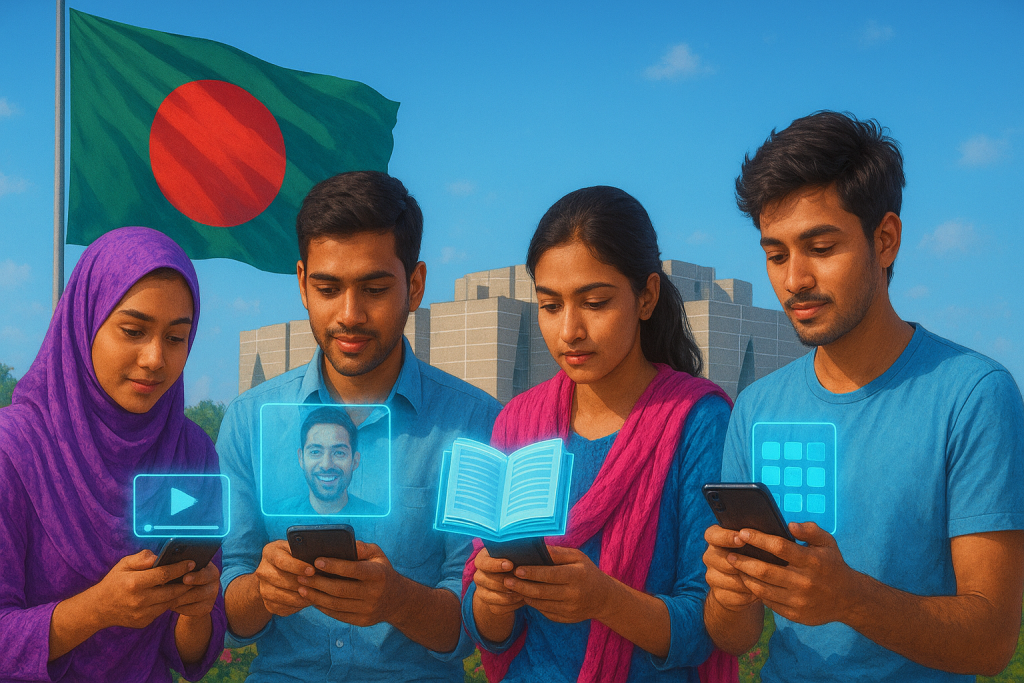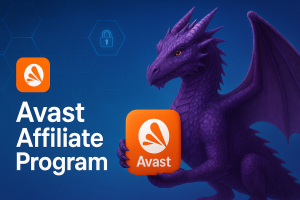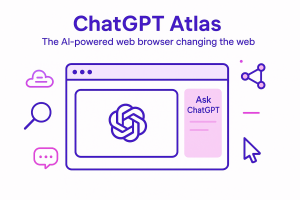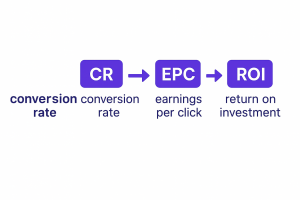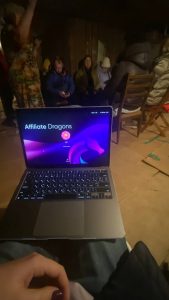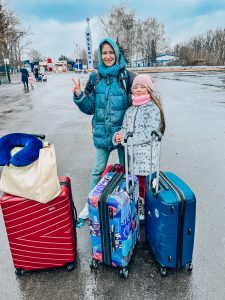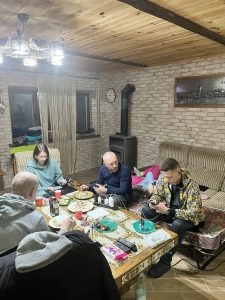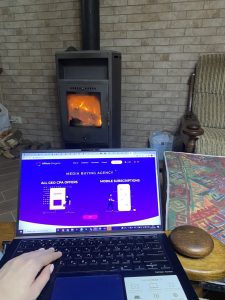Bangladesh is a dynamically developing market for mobile services, boasting a massive subscriber base and growing internet penetration. As of early 2025, the country had around 185 million active mobile connections (approximately 106% of the population), with the number of internet users reaching 77.7 million (about 44.5% of the population). This enormous audience, the adoption of modern communication technologies (4G and initial 5G rollouts), and a well-established digital payment ecosystem make Bangladesh one of the most exciting GEOs for mobile value-added services (mVAS) in 2025. Below are the key characteristics of this market and tips for a successful VAS product launch.
Key characteristics of the Bangladesh Telecom Market
Operators and Connectivity
Bangladesh is home to four mobile operators: Grameenphone (GP)—the largest player with a market share of ∼46%; Robi Axiata (∼30%); Banglalink (∼20%); and the state-owned Teletalk (∼3.5%). The total mobile subscriber base exceeds 180 million users.
The infrastructure is rapidly modernizing: 4G networks were launched in 2018, and by 2024, 4G coverage had reached 88% of the population (e.g., Banglalink). Other operators are also aggressively expanding their 4G footprint, driving up the number of mobile internet users. For example, between 2020 and 2024, Banglalink alone grew from 8 million to 21.5 million 4G subscribers, reflecting the mass shift to smartphones and high-speed mobile internet.
The 5G rollout began in 2025: Robi launched pilot 5G zones in major cities (Dhaka, Chattogram, Sylhet), and Grameenphone announced 5G launches in all divisional cities. While coverage is currently limited to specific areas, the presence of 5G highlights the market’s drive for innovation, and 4G has become the widespread standard, providing a solid base for various VAS (streaming, mobile apps, banking, etc.).
Coverage and Mobile Internet
Mobile coverage in Bangladesh is nearly complete: network development ensures that even remote areas have voice connectivity and mobile internet. About 65% of all mobile connections are broadband (3G/4G/5G), indicating high mobile internet accessibility. The median mobile data download speed reached ∼28 Mbps in early 2025, an increase of ∼23% year-on-year—a sign of improving network quality, even though the regulator admits 4G quality still lags behind optimal standards.
For many residents, mobile internet is the primary way to get online, as fixed broadband infrastructure is underdeveloped. As of early 2025, there were 60 million social media accounts in Bangladesh (34% of the population) —the audience actively consumes digital content via mobile devices. However, a significant portion of the population (over 95 million people) remains offline, pointing to vast potential for further growth as device and tariff costs decrease.
Digital Payments and Billing
A crucial feature of the market is the widespread adoption of Mobile Financial Services (MFS) and electronic payments. The country has at least 13 mobile money operators, the largest being bKash, along with popular players like Nagad and Rocket. The number of registered mobile wallets is soaring, surpassing 236.7 million by the end of 2024 (more than the population, as many users have multiple accounts). Daily MFS transactions amount to around $439 million —digital payments are permeating retail purchases, transfers, and bill payments, gradually displacing cash.
However, only about 37.6% of registered wallets (≈88.9 million) are actively used, suggesting untapped potential. Nevertheless, the high overall engagement in mobile payments simplifies the monetization of subscription services: paying via phone balance and e-wallets is a familiar practice.
All major mobile operators support Direct Carrier Billing (DCB)—paying for digital content directly from the mobile account. For example, Grameenphone launched DCB in partnership with the Fortumo platform in 2020, allowing third-party services to charge content to GP subscribers’ balances. Similar integrations exist with Robi and Banglalink. Thus, VAS providers have a choice between Carrier Billing and alternative payment methods (MFS), which significantly broadens the audience of potential subscribers in Bangladesh.
Audience and User Behavior
Audience Size and Structure
Bangladesh’s population in 2025 is about 175 million people, with ∼42% living in urban areas and 58% in rural areas. The market is very young demographically, with a median age of just 26 years. Youth and working-age people form the core internet audience open to new mobile services. Mobile penetration exceeds 100% due to multi-SIM usage, and about 45% of residents use the internet.
Although more than half the population is currently offline, the momentum for new users connecting remains positive—the internet audience grew by ∼0.94 million people in 2024 alone. Social media (Facebook, YouTube, etc.) is hugely popular, evidenced by the 60-million-strong social media account base . Virtually all internet activity is conducted on mobile devices—smartphones or advanced 3G phones.
Behavioral Features
For a significant portion of the population, the smartphone is the main device for accessing information, communication, and entertainment. Bangladeshi users are heavy consumers of multimedia content—music, video, games—primarily through mobile internet. For instance, providers note a surge in traffic: the average Grameenphone mobile user consumes ∼6.7 GB of data per month, a figure that is growing at double-digit rates.
However, there are also barriers: the relatively high cost of mobile internet compared to income, and network speeds that are not the fastest in the region, limit the activity of some users. Moreover, not everyone owns a smartphone: estimates from 2019 suggested only ∼40% of mobile subscribers had a smartphone . While this share has increased since then, a significant number of people still use basic feature phones. This group is often restricted in using advanced VAS and requires a special approach (e.g., USSD/IVR-based services for those without mobile internet).
Overall, audience behavior shows a readiness to adopt new services—the expansion of mobile financial services, where millions of previously unbanked people began using their phones for monetary transactions, is a case in point. Users positively perceive services that offer practical value (educational, utilities, banking) or entertainment, provided they are localized and easy to pay for.
Language Environment
The vast majority of the population speaks Bengali (Bangla). Bangladesh is essentially a monolingual country, with 98% of residents speaking Bengali as their native language. English is used in business and education, but for the mass content market, localization into Bangla is critically important. This applies to the service content itself (e.g., music, video, local language texts) and communication channels—SMS alerts, menus, and help information must be provided in the local language. Literacy and digital literacy are improving but can still be an obstacle in rural regions, especially among the older generation. Therefore, a simple UX in the native language and explanatory support are essential for successfully engaging a broad audience in subscription services.
Regulatory requirements for subscription services
The telecom VAS market in Bangladesh is strictly regulated by the government body, BTRC (Bangladesh Telecommunication Regulatory Commission). To offer paid subscription services, one must obtain T-VAS Provider registration (Telecommunication Value Added Service) from the BTRC. A T-VAS licensing guideline has been in effect since 2018, under which over 183 licenses were issued to local content providers by 2020.
Foreign companies can also operate in this market, but they must partner with local entities—the local ownership share must be no less than 30%. In essence, a foreign VAS product developer must either establish a joint venture subsidiary with a Bangladeshi partner or work through an already registered service aggregator. This policy aims to localize the business and prevent capital flight abroad.
The regulator pays special attention to the subscription activation process. Previously, unscrupulous activation of paid services without explicit subscriber consent was common, leading to a wave of complaints. In response, BTRC tightened the rules: mandatory double consent (double opt-in) from the user has been required since 2018–2020 for any subscription activation.
This is implemented through an OTP code or a two-step activation: for example, after requesting a subscription, an SMS with a one-time password or a confirmation request is sent, or a combination of USSD/IVR menus is used for re-consent.
The operator is prohibited from charging a fee until the user confirms the subscription intention twice.
In addition, all services must provide a convenient way to unsubscribe (e.g., a “STOP” command, a single number to deactivate all services)—operators have implemented a “Stop All” option for immediate cancellation of all VAS. BTRC directly monitors the activities of VAS providers and operators: violations can lead to fines and even temporary bans on connecting new subscriptions through the offending operators.
Thus, anyone planning a subscription service launch in Bangladesh must strictly comply with regulatory requirements: register with the T-VAS registry, implement a transparent double opt-in subscription process, ensure fee/balance notifications are in Bangla, and provide an easily accessible opt-out method.
It’s worth noting that the definition of T-VAS in Bangladesh covers almost all supplementary communication services (excluding basic voice calls, SMS, and internet access). According to the BTRC definition, VAS are any electronically provided services that add value to the operator’s basic services, and are distributed through operator networks using direct carrier billing and/or other Central Bank-approved payment methods.
This includes mobile media and entertainment, information subscriptions, content services (music, video, ringtones), notification services (news, sports), m-Health, LBS (Location-Based Services), etc. Such services fall under BTRC oversight and must operate within the legal framework.
The regulatory environment is generally favorable for responsible players willing to adhere to the rules, but compliance is a prerequisite for entering this market.
Tips for Launching VAS Products in Bangladesh
When planning to launch or scale up mobile subscription VAS campaigns in Bangladesh, you must consider several local specifics and best practices:
Subscription User Flow: Keep it Clean and Compliant
Design a simple and clear subscription process that incorporates the double opt-in requirement. The ideal setup is a two-step flow: for example, the user sends a request (via click, USSD code, or SMS), receives a message with an OTP or a confirmation request, and the subscription is activated after input/confirmation. This approach not only ensures regulatory compliance but also boosts user trust.
Keep in mind that a significant portion of the audience may use feature phones—plan for subscription options without mobile internet (via USSD menus, SMS commands, IVR). The flow should be as short as possible, with instructions in the understandable local language, and include auto-notifications about successful activation and how to unsubscribe. Transparency and convenience during the sign-up phase are critical for audience retention and brand reputation.
Content and Interface Localization: Speak Bangla
Ensure full localization into Bengali across all aspects of the product. The service content (texts, audio, video) must match the audience’s cultural and linguistic preferences. Since 98% of the population speaks Bangla, English-only or unadapted material will significantly limit reach.
Consider local cultural contexts: for example, the religious calendar (Ramadan period), national holidays, popular themes (cricket, Bollywood and Bangladeshi films, music)—integrating these elements into the content will increase user response. The user interface—USSD menus, SMS broadcasts, push notifications—should also be in the local language and easy to understand. Provide localized customer support and FAQs.
Localization also applies to pricing: tariffs should be denominated in Bangladeshi Taka (BDT) and chosen at levels appropriate for local income (ARPU in the mobile sector is low, around $1–2 per month, making inexpensive daily or weekly subscriptions optimal). The perceived value of the service will be higher if it “speaks” to the user in their language and addresses their daily interests.
Billing and Payment: Leverage DCB and MFS
Use payment channels that are convenient for the audience. The most widespread and simple method is Direct Carrier Billing (DCB), which deducts the subscription fee from the mobile phone account. All major Bangladeshi operators support DCB integration, allowing the user to subscribe without a bank card, simply by agreeing to the charge from their prepaid balance or postpaid account. For the provider, this means partnering with an operator or an aggregator and accepting revenue sharing (operator billing fees can reach 50% in such markets).
Nevertheless, DCB provides maximum reach—even rural residents usually have a mobile phone with a balance, whereas bank cards are less common. Besides carrier billing, consider supporting Mobile Financial Services (MFS): integration with bKash, Nagad, and other MFS can attract advanced digital payment users. For example, bKash has tens of millions of active users, and offering a mobile wallet payment option can increase conversion to paying subscribers.
Pay attention to taxes and regulation: VAT (Value Added Tax) and Supplementary Duty are levied on telecom services in Bangladesh, and operators include them in the tariff. You must correctly configure billing so that end-user prices include all mandatory fees and match the approved tariff tiers (e.g., typical VAS prices: 2–5 BDT per day, etc.). Regularly inform subscribers about charges (SMS for each renewal)—this is both a requirement and a factor in building trust.
Geo-Targeting and Segmentation: Drill Down to the Audience
When planning marketing campaigns and the product itself, consider the heterogeneity of the Bangladeshi audience. Geographic and behavioral targeting is an effective approach.
- Geographically: Residents of major cities (Dhaka, Chattogram, etc.) have higher access to 4G/5G and smartphones, making them more responsive to data-intensive services (video entertainment, educational apps, etc.). In rural areas, smartphone penetration is lower, and connectivity may be limited to 2G/3G—it’s better to promote lighter services (SMS alerts, voice prompts, basic information services) and focus on practical utility (agro-informers, healthcare, basic education), along with the local language and simple technical requirements.
- Socio-Demographically: Keep in mind that a significant part of the audience is youth under 30, open to new content and active on social media. Digital marketing on Facebook, YouTube, and TikTok with relevant content and influencers is effective for this group. Women and rural users may be less exposed to internet advertising but can be reached via operator channels—operator-sent messages, retention campaigns (VAS bundles from the operator, special tariffs).
- Operator Segmentation: It makes sense to segment by operator: GP has the largest base and a potentially more affluent audience, Banglalink has a younger, more digital audience, and Teletalk serves a specific segment of civil servants and rural users. Tailoring the marketing message to each operator’s audience profile will increase campaign effectiveness.
Conclusion: The Bangladesh mVAS Opportunity
The Bangladesh market in 2025 combines significant potential with certain challenges. On one hand, there are tens of millions of new users getting online, widespread mobile technology and payment adoption, favorable demographics, and operator support for promoting VAS. On the other, strict regulation demands meticulous compliance, and audience specifics require deep localization and service adaptation.
For affiliates and companies planning to launch mobile subscription products in Bangladesh, success will depend on the ability to account for these factors: offering users relevant content in their language, ensuring a seamless and transparent subscription and payment experience, and establishing cooperation with local operators and partners within the existing framework. With the right approach, Bangladesh has the potential to become a highly profitable GEO for mVAS business growth in the South Asia region, thanks to its massive audience and dynamically evolving digital ecosystem.

